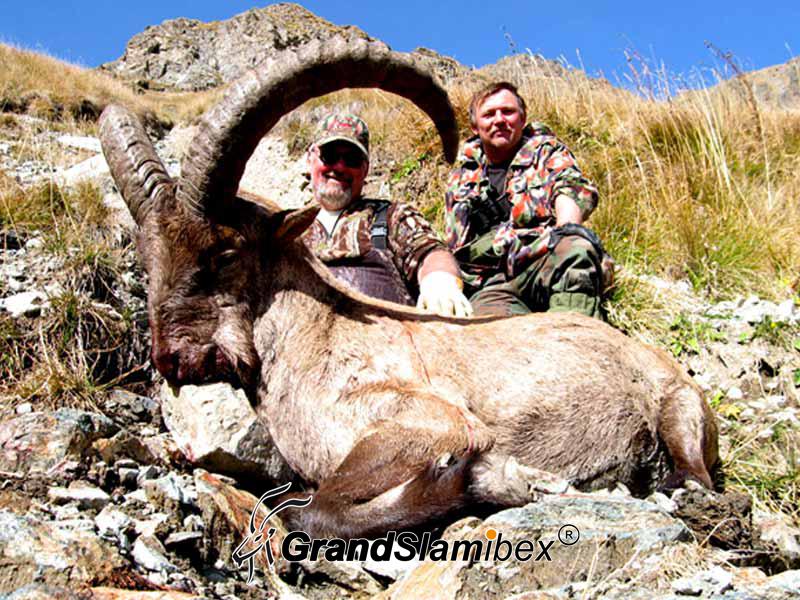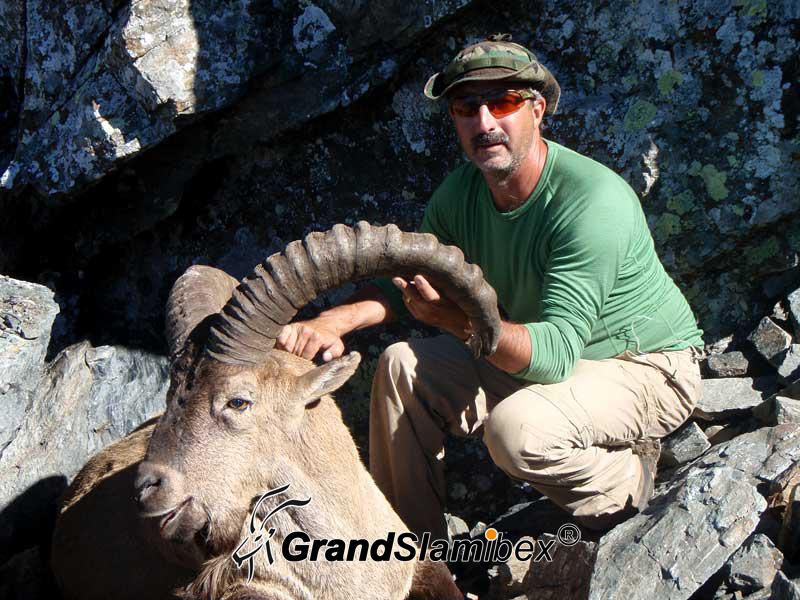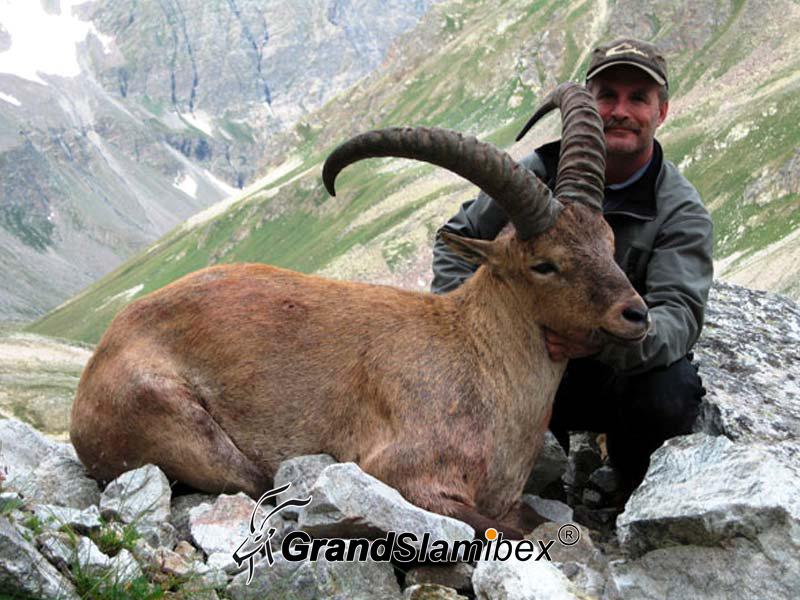MID-CAUCASIAN TUR HUNTING IN CAUCASUS (RUSSIA)
In each Mid-Caucasian tur hunt, the client is guided by two guides, the hike takes 3 – 4 hours from base camp to the tented fly camp, where he will stay until he gets his trophy. Russia/Caucasus is the only one destination for Mid-Caucasian tur hunting.






Mid-caucasian tur hunt
Intermediate, between West Caucasian and East Caucasian Tur.
They stand 38-43 inches, (97-109 cm), at the shoulder, with black horns which are somewhat smooth, with smaller cross ridges and the tips may be closer together.
The beard is shorter, being only of moderate length and its summer coat is reddish-grey, with forehead and chest darker and browner.
The front of the legs are darker, becoming black near the hoofs and the belly and inner thighs are a dirty white. A darker dorsal stripe may or may not be present.
The Caucasus Mountains belong to a system that extends from southeastern Europe into Asia. The Greater Caucasus Mountains are mainly composed of Cretaceous and Jurassic rocks with the Paleozoicand Precambrian rocks in the higher regions.
Mid-caucasian Tur
Some volcanic formations are found throughout the range. On the other hand, the Lesser Caucasus Mountains are formed predominantly of the Paleogenerocks with a much smaller portion of the Jurassic and Cretaceous rocks. The evolution of the Caucasus began from the Late Triassic to the Late Jurassic during the Cimmerian orogeny at the active margin of the Tethys Ocean while the uplift of the Greater Caucasus is dated to the Miocene during the Alpine orogeny. The Caucasus Mountains formed largely as the result of a tectonic plate collision between the Arabian plate moving northwards with respect to the Eurasian plate.
HANGAI ARGALI
As the Tethys Sea was closed and the Arabian Plate collided with the Iranian Plate and was pushed against it and with the clockwise movement of the Eurasian Plate towards the Iranian Plate and their final collision, the Iranian Plate was pressed against the Eurasian Plate. As this happened, the entire rocks that had been deposited in this basin from the Jurassic to the Miocene were folded to form the Greater Caucasus Mountains. This collision also caused the uplift and the Cenozoic volcanic activity in the Lesser Caucasus Mountains.



